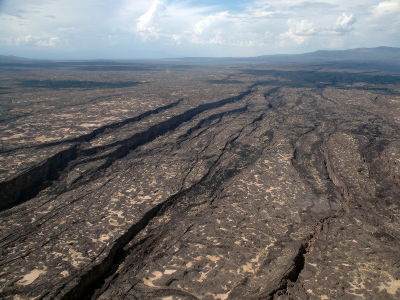Using data mining, we succeeded in collecting 10 times of conventional earthquake data, and the number of earthquakes is 'once every 174 seconds'

by
A large number of small earthquakes occur before and after a large earthquake. In other words, the more you collect earthquake data, the more useful it is for predicting and researching large earthquakes that will occur someday. According to a paper published in the journal 'Science', when researchers used data mining to confirm the waveform observed by the Southern California earthquake observation network, they were able to obtain 10 times as much earthquake data as before. . The number was so high that 495 times a day, 'Early earthquake has occurred once in 174 seconds'.
Searching for hidden earthquakes in Southern California | Science
https://science.sciencemag.org/content/early/2019/04/17/science.aaw6888

Data mining digs up hidden clues to major California earthquake triggers | EurekAlert! Science News
https://www.eurekalert.org/pub_releases/2019-04/danl-dmd041819.php
Scientists Uncover California's Hidden Earthquakes-Scientific American
https://www.scientificamerican.com/article/scientists-uncover-californias-hidden-earthquakes/
The research was conducted by researchers at the California Institute of Technology , Los Alamos National Laboratory , and the Scripps Marine Laboratory .
The state of California has been attacked numerous times by the Cascade Earthquake of Moment Magnitude (Mw) 8.7-9.2 in 1700, the San Francisco Earthquake of Mw 7.9 in 1906, and huge earthquakes.
After that, the San Fernando earthquake in 1971, the Loma Prita earthquake in 1989, the Northridge earthquake in 1994, and several Mw six earthquakes have occurred several times, but researchers are expected to have Mw 8 class in the future We predict that 'Big One' will come. The Southern California Earthquake Network has collected information from 550 seismic stations over the past 20 years to know when and where it will occur.
The research team has now analyzed nearly 100 TB of accumulated data from the Southern California Earthquake Network using 200 graphics processing units. Perform template matching using previously confirmed earthquake waveforms and signals, and also detect very small earthquake signals that were so far hidden in noise. We confirmed 1.18 million earthquakes, 10 times the earthquakes we could confirm using the conventional method. This number is equivalent to 'one earthquake occurs about every 174 seconds in California'.
The new “Earthquake Catalog” created by the research team is expected to facilitate the analysis of earthquakes and faults in the new era.
Related Posts:
in Science, Posted by logc_nt







